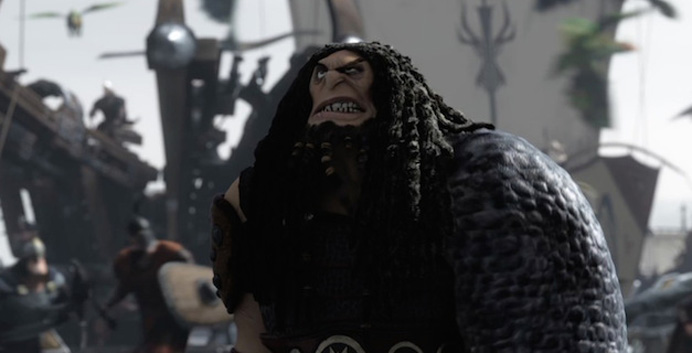
How to Train Your Dragon 2 (2014)
Written & Directed by Dean DeBlois
102 min.
Mild spoilers ahead.
This film is a joyride right from the start, soaring us over cloudscapes and real-looking ice formations—all accompanied by Sigur Rós. And compared to the first film, the world, and its inhabitants, are fleshed out more. In one short and refreshingly natural conversation, Astrid actually becomes a real character, her relationship with Hiccup finally more than her being his reward for completing the first film’s plot. This scene sets the bar high, and the film meets it with richly developed characters, psychological complexity, and a few scenes which use silence and subtle body language in ways not often seen in an animated kids’ movie. Meets it until the end of the third act, that is. The third act jolted me out of the film, and proceeded to collapse, or outright ignore, everything that had been so meticulously built.
I hate villains—mostly for the way they seem to corrupt interesting plot lines, and undermine moral ambiguity. Drago Bludvist, the villain of this film, is perhaps the most acute and offensive example of this I’ve ever seen. In the first two acts, he and his Dragon Army are just one part of the mysterious ice-shrouded archipelago world that Hiccup and Toothless are gradually exploring. The third act pops that bubble, with Drago narrating the childhood experiences that led him to a life of being mean to animals and conquering the world. This sort of thing is kind of expected in a kids’ movie, but coming on the heels of the emotional realism displayed beforehand, it’s like a slap in the face.
HTTYD 2 is even less subtle about its underlying intellectual conflict than its predecessor. Hiccup and his mother are dragon rescuers who champion ideas about animals that are central to our own pet-obsessed modern culture, but seem absurd, even revolutionary, to the Vikings. The first film painted dragons like wolves—they stole sheep and the Vikings wanted to wipe them out. Its sequel recapitulates our ancestors’ domestication of wolves as dogs, bringing them into the ethical fold of human society as servants and companions, raising questions about how they deserve to be treated. Hiccup, Valka, and the Vikings on Berk see dragons as friends and allies, while Drago Bludvist sees them as dangerous and powerful tools that can be made subservient through violence and power. This should sound familiar—it hits much closer to home than debates about hunting wolves because Drago Bludvist’s ideology is essentially a slightly-exaggerated version of the dog training mindset peddled by Cesar Millan every week on the National Geographic Channel.
The film crams in just about every animal trope it can in order to play up the emotional appeal of this central conflict—but it’s still quite clear that the dragons are intelligent, and our equals as far as understanding complex social relationships. This would suggest that dragons, like dogs, have complex societies involving family units, cooperation, domination, friendship, and rivalry. But the writers don’t go that route—they instead utilize a trope that is extremely misleading and just plain lazy.
The first film led us to believe that the giant dragon Red Death was a kind of aberration in dragon society. Now, according to the second film, this is just how dragons work—an alpha is dominant over every member of a large and diverse hive of dragons, and coerces them into doing its bidding using a direct form of mind control (Cesar Millan’s oversimplified ethology in a nutshell).
The problem with this is not so much that it is unrealistic, or that it perpetuates a myth (this is fantasy, these are make-believe dragons, and I don’t necessarily care if the mythology is consistent) but that the writers codify Millan/Bludvist’s ideology into the biology of the dragons. We should be cheering Hiccup as he violently shows Bludvist that his ideas about dragon training are wrong. Instead, we see Hiccup blatantly ignore a preponderance of evidence about this aspect of dragon biology that he seems hitherto unaware of, and then simply exploit it to benefit his own faction and ideology, without acknowledging the fact. Hiccup may be the good guy, but Drago Bludvist did understand dragons better than he did. This is as unfortunately true for Hiccup as it is for the audience—dragon mind control is real in the movie, no matter how much we want to ignore it and pretend it never happened.
Magic powers like mind control are something that writers must use with great caution and subtlety, in order to avoid pitfalls such as the ones on full display in this movie. Two scenes in particular drip with absurd melodrama at the expense of plot—the characters’ desires and goals are literally overridden by an external force, in order to violently jerk our heartstrings. It’s the definition of cheap.
HTTYD 2 is certainly a disappointment, but that’s just because most if it is so good. It’s the sort of film that, at its best, raises goosebumps and gives you hope for the future of animated films. Worth seeing, even for its faults—and it probably more enjoyable now that you know in advance the faults are there, and won’t be caught off guard by them.